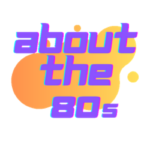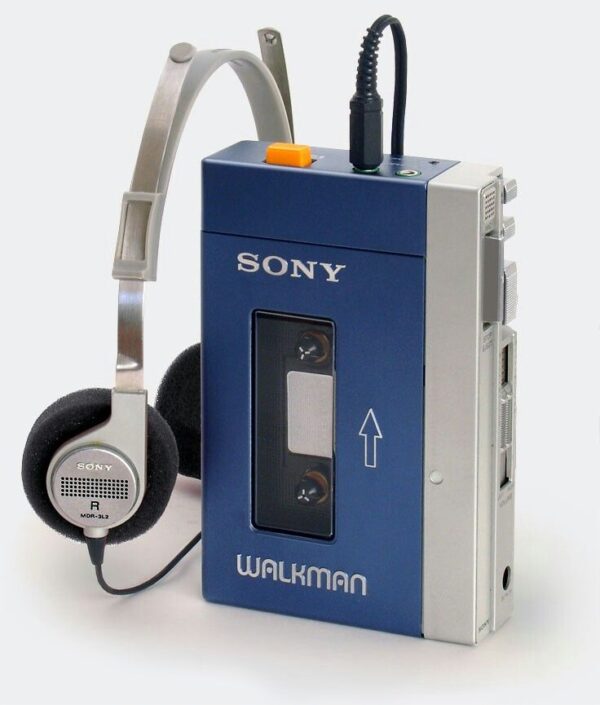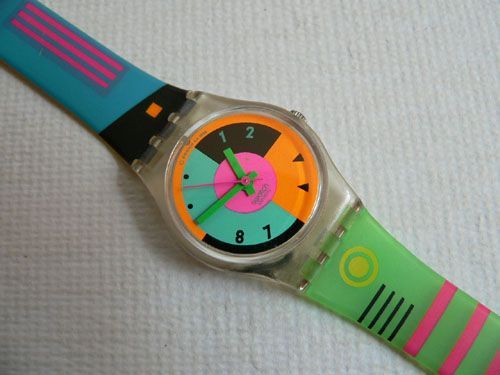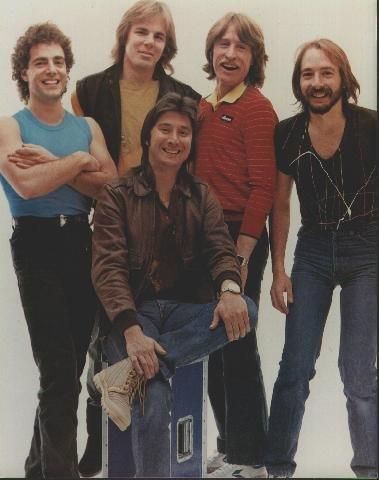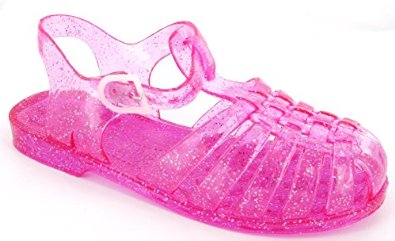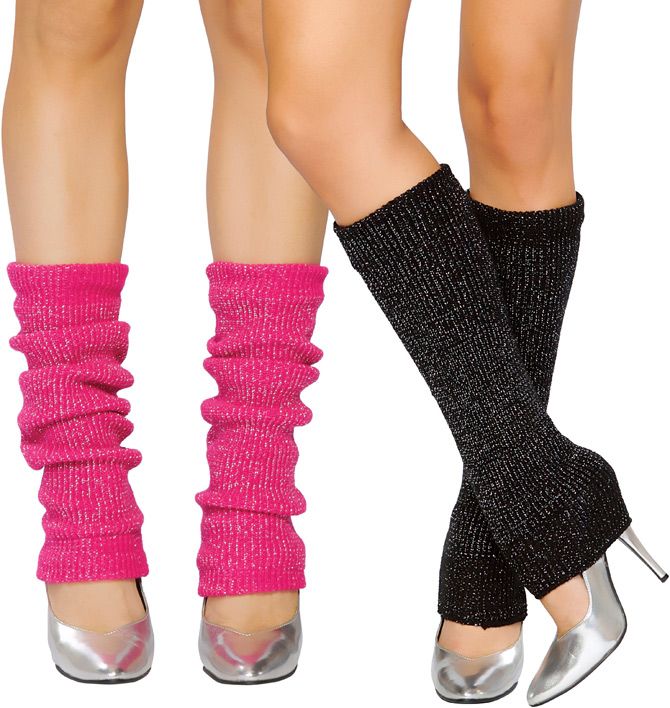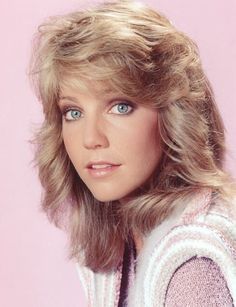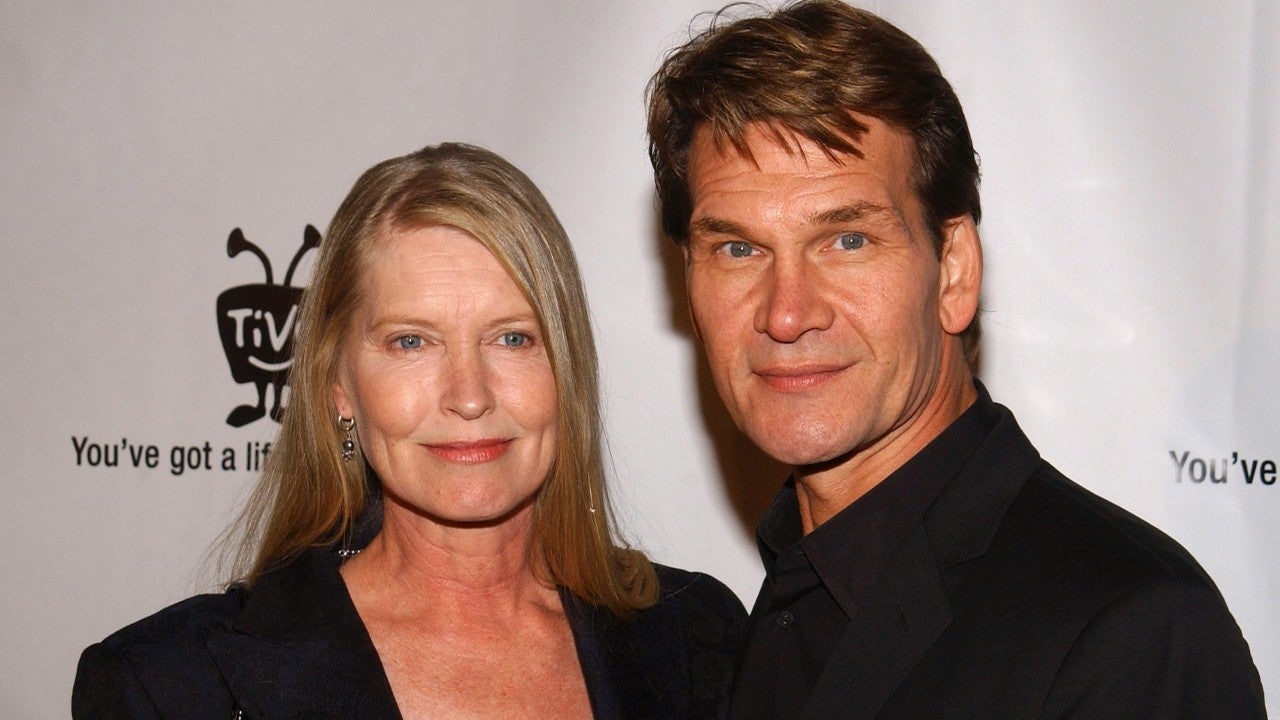15 Biggest Fads from the 80s
There were so many amazing trends and things that came from the 80s. While some of it has gone away and come back, like shoulder pads, Rae Bans sunglasses, home video game systems, others are a thing of the past. This would include Cabbage Patch Kids, Swatches and the Walkman. The crazy thing is that none of them are related; each fad is unique in that it had its own reason why it went away or was replaced by something else. Can you think of anything you absolutely loved as a kid but can’t imagine getting into now? Personally, it was video games for me. Now with a full-time job and writing these weekly blogs, there’s just hardly enough time!
Anyways, even though they don’t last, they are part of what made the 80s unique. When you think of the 80s, you think of these fads, like the Commodore 64 computer, The Goonies or the Rubik’s Cube, although some will argue it’s still popular today.
Nevertheless, while we do wish some would come back, some are just better left in the past. But fads are a good thing! They allow us to enjoy reminiscing about amazing times like the 80s, having those “remember when” conversations. Hopefully some of these 80s fads will bring back some great memories for you. Enjoy!
1. The Walkman
Before the days of having the power of the world available in your little mobile device, the Walkman allowed you to listen to music on the go! You could take it to the gym, the park, on dates, vacation - just about everywhere. Just slip the little cassette player in and slip on your headphones (not earbuds).
If you’ve never heard of the Walkman, it was a portable media player manufactured by Sony and was released in 1979. It allowed users to listen to music of their choice on the go. Like the “kleenex,” its popularity also made “the walkman” an unofficial terms for handheld audio devices from any producer or brand. But Sony sold about 200 million cassette-based Walkmans before production stopped in 2010.
Sony competitors Panasonic, Toshiba and Aiwa also came out with their own models, but of course, Sony still remained the top dog on portable audio listening devices. People still preferred to listen to vinyl records in their own homes, but the introduction of the Walkman still helped cassette tapes to outsell records for the first time since 1983. In 1986, the term “Walkman” was officially entered into the Oxford English Dictionary. To this day, Sony still uses the term to brand their MP3 players, but nobody uses it to the extent today as back then.
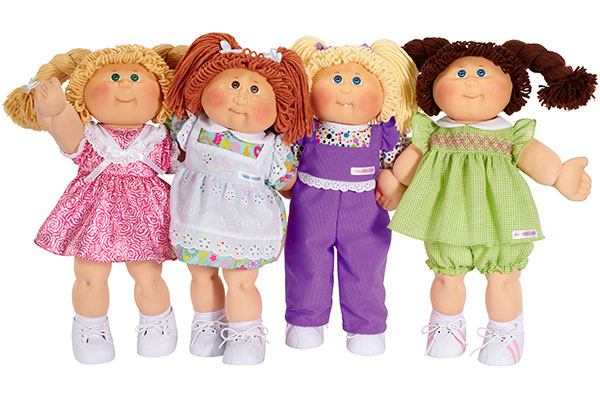
2. Cabbage Patch Kids
Did you have a Cabbage Patch Kid growing up? If you grew up in the 80s, odds are you did. In fact, there was a surge in demand during the holidays of 1983 when people were plowing over eachother, ripping dolls out of others’ hands just to get one. You might want to read more about it in my post on Why Cabbage Patch Dolls Were So Popular.
Essentially, the history behind it as that Xavier Roberts, the dolls’ creator, had gotten an idea from Martha Nelson Thomas, a Kentucky native who sold her own, unique dolls at craft fairs and shows. When Xavier noticed they were starting to become popular, he purchased a few, but only to resell them in his home state of Georgia at a higher price. Martha immediately confronted him as soon as she found out, but it wasn’t long before Xavier found a cheaper option to produce and sell them in masses.
They were first sold at Babyland General in Cleveland, GA, where children could witness the “birthing” process before signing fake adoption papers and getting the doll’s birth certificate. Xavier then appeared on the TV show “Real People” to further promote the dolls in 1980. From then on, sales spiked. Toy manufacturer Coleco began producing them in masses, renaming them as the Cabbage Patch Kids that sold between $20 and $40, although the ones at Babyland General sold at about $125.
By Christmas of 1983, demand was so high that stores couldn’t keep up and customers became violet to get their hands on a doll. By the end of 1983, over three million dolls were sold with so many orders left unfilled.
But in 1985, the fad was over, and the product was handed over to various companies as they desperately tried to revive the trend with no luck, going through Hasbro, Mattel, Toys “R” Us, and Play Along Kids. The current owner is Wicked Cool Toys, who purchased the rights in 2015.
3. Rubik’s Cube
This was one of my favorite toys from the 80s. I plan to do a post on it soon! But one of the most amazing features of this puzzle is that the concept is so simple and yet challenging that it entices the consumer to keep trying! You could spend hours trying to make all sides the same color and still be dumbfounded. If you want to “cheat” and solve it quickly, just Google the algorithms and you’ll have it solved in less than an hour on your first try. Or, just peel off the stickers and re-stick them. But if you want a challenge, you should definitely try to solve it on your own with no help.
While the Rubik’s Cube fad certainly took place during the 80s, it was invented by Hungarian Professor Erno Rubik in 1974 under the name Magic Cub. But it wasn’t officially released in the United States until 1980 at a Hollywood party hosted by Zsa Zsa Gabor.
As soon as it hit the market, the public was crazy about it - everyone had to get one. It was also available during the famous Princess Diana and Prince Charles’ wedding, with their royal image emblazoned on it. Now, over 350 million units have been sold since the products have hit the shelves. One of Erno Rubik’s famous quotes: “People like its beauty, simplicity and form. It’s really not a puzzle or a toy. It’s a piece of art.”
4. Swatch Watches
When these were considered a major fashion trend of the 80s, you would almost never see anyone wear just one; they had at least three. In fact, both wrists were covered with all sorts of things like Swatches, friendship bracelets and other colorful plastic bracelets.
Founded in 1983 by Ernst Thomke, Elmar Mock and Jacques Müller, the Swatch was developed as a response to the “quartz crisis” during the 70s and 80s, which was when cheap Japanese digital watches competed with traditional European mechanical watches. The Swatch came from the phrase “second watch”, which were intended to be casual, disposable accessories.
Since then, they have come out with so many different product lines, including:
- Swatch Originals
- Swatch Irony
- Swatch Skin
- Swatch Bijoux
- Swatch Digital Touch
- Swatch Bellamy and Pay
- Swatch Sistem51
- Swatch Bioreloaded
The very first swatches released were priced at $35 each and were an immediate success. Producing more than 10 million by 1987, some were even scented. By 1992, there were over 500 different styles, like “Time to Blue” and “C-Pink”, both of which are under their Bioceramic product lines.
Nowadays, you won’t see people wearing four or five on their wrists, and they aren’t nearly as popular, but are still worn by many loyal consumers today.

5. Rock Star Hair
The 80s were certainly the best decade for rock and roll bands, with Mötley Crüe, Van Halen and Journey being my top favorite. You certainly couldn’t rock out with short hair to bang around! In fact, there was a whole fashion trend with rock stars, like leather jackets and gloves, black leather boots and bandannas. Check out my blog on rock star fashion trends for more info.
But getting back to rock star hair, these bands used Aqua Net just as much as women, almost a can per show. Women also loved this as it gave off that bad boy vibe, especially with the leather jacket and gloves.
But overall, the long hair just matched the rockstar style. Just like the lyrics, long hair just flowed with the music, giving the crowd a visual. Speaking of crowd, even they would mimic some of the trends, rocking it out in their own small band.
Sadly, the fad was short-lived as the bowl hair cuts, semi-cornrows, crimped hair and feathered bangs took over. The age of the rockstar was also starting to fade as pop icons N’Sync, Backstreet Boys and Brittney Spears took over. You may still see some of these old trends at state fairs, festivals and even concerts, but probably not too often in public. However, you will see the “man bun” where guys choose to grow out their hair for the sole purpose of putting it up in a bun.

6. MTV
I miss the days when the music TV station actually played music. But when it was first launched, it was a huge hit as viewers had a whole new way to enjoy their favorite music; instead of buying concert tickets, they could watch their favorite artists perform on TV.
Launched on August 1, 1981, co-creator John Lack announced, “Ladies and gentleman, rock and roll” on the cable network’s first music-oriented programming. The news and music videos were hosted by VJs, or video jockeys, who promised viewers, “you’ll never look at music the same way again.” This was a huge promotion for the music industry as up and coming artists were desperate for a spot in regular or heavy rotation. Of course, the videos on heavy rotation would include those with Michael Jackson, Mötley Crüe, Van Halen, Cyndi Lauper, Madonna and other big name artists.
As money poured in to promote music videos, MTV was one of the biggest successes from the 80s, even expanding its programming. In September 1984, it held its first awards ceremony, known as the MTV Video Music Awards, which featured Madonna’s “Like a Virgin” performance, in which she provocatively rolled around the stage in a wedding dress.
But things started to decline when Viacom bought out Warner-Amex Satellite Entertainment in 1985, which also owns Nickelodeon. As Viacom believed the “novelty of just showing music videos has worn off”, non-music programming was introduced in 1987 including “Remote Control” as the first show, featuring an irreverent pop-trivia quiz show with Adam Sandler as a recurring contestant.
In 1988, when hip-hop music took off, MTV Networks launched “YO! MTV Raps”, followed by its “MTV Rockumentary” series in which reviews the careers of various artists like Michael Jackson, Aerosmith and the B-52s. From then on, reality TV shows like “16 and Pregnant” took over, and it was never the same.
If you do remember MTV in its earlier days, you’ll know there certainly wasn’t anything like it. Music videos all day every day, this was what we had playing when we cleaned the house! It will never be forgotten.
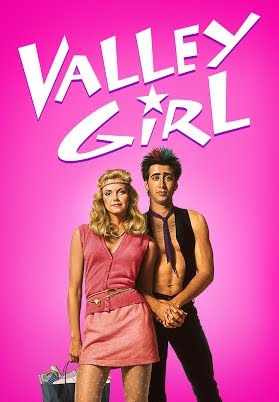
7. Valspeak
If you saw the movie Valley Girl with Nicolas Cage and Deborah Foreman, you’re probably familiar with the term “valleyspeak” or “Valspeak” for short. This was a social dialect coined by Valley girls, although it has since spread across the country, even to guys as they became known as “Val dudes”. The fad was started in California’s San Fernando Valley in the early 80s and gained popularity when artist Frank Zappa and his daughter Moon Zappa came out with the song, “Valley Girl”.
The term is mostly characterized by both its use of uptalk and vocabulary. Speakers are most often perceived as “air-headed” and “materialistic”, using the words and phrases “like”, “totally”, “for sure” and “be like”. Valspeak is also similar to California speech, which includes a combination of Valspeak and surfer dude speech, often “associated with good English, but never proper”.
I have to say I’m guilty of throwing around a couple of these phrases myself, but my personality is far from that of a valley girl. Nowadays, I hear more girls really annunciating their “s’s”, making them out in a really high pitch tone if you know what I mean. To them, maybe they feel like it makes them more feminine or prettier. To me, I think it’s just ditzy, but to each their own!
8. Arcades
Arcades are probably one of the biggest fads from the 80s. Almost everyone would hang out at an arcade at some point after school or on a Friday or Saturday night. They were a cheap and fun way to unwind with friends and play all kinds of different video games.
Everything from Pac-Man, Super Mario Bros., Galaga, Frogger and so much more, you could never get bored. Like the Rubik’s Cube, the concepts of these games were simple and yet challenging, which seemed to be the craze of the 80s.
This also reminds me of one episode in Stranger Things where Mike, Dustin, Will and Lucas were astounded when they found out “Mad Max”, the person who beat their high score on Dig Dug was a girl. For some, beating a high score on any arcade game with their name displayed on the screen was truly satisfying. That’s another reason why so many spent hours at the arcade; they weren’t there for friends, but really committed themselves to getting high scores.
Nowadays, you can still go to arcades, pay a set entrance fee and enjoy playing as much as you want for as long as you want. They’re all nostalgia, and everyone can get a great deal while playing their blast from the past.
9. Yo-Yos
The yo-yo in the 80s was like the fidget spinner in the 2010s. It was considered the staple toy in every kids bedroom as they were cheap and incredibly entertaining. Personally, I could never get the thing to roll back up and would spend countless hours trying to make it work. I still can’t to this day!
But you can be sure the yo-yo wasn’t invented in the 80s; they’ve been around for a while. Try terracotta yo-yos from ancient Greece and even Egyptian temple wall paintings with yo-yos. Even King George IV, the previous Prince of Wales, was playing with one in the early 18th century. The French also called it “L’Emigrette”.
The yo-yo didn’t become popular in the Western World until Pedro Flores, a Filipino who emigrated to the United States opened a factory in Santa Barbara, CA. It became popular during the 1930s when Flores’ company, now owned by Donald F. Duncan, ran promotions with the Hearst newspaper empire.
In 1946, after Duncan purchased the company, he moved it to Luck, WI where the maple needed to produce the yo-yo was plentiful. After mass-producing them at a rate of 3,600 per hour, Luck became known as the Yo-Yo Capital of the World.
Even today, yo-yos are still popular due to competitions, exhibitions and numerous companies producing their own versions.
10. Mullets
Donned by Lionel Richie, Brad Pitt, Jesse Stamos and Patrick Swayze, the mullets were another big 80s fad. Another group who helped popularize this trend was the Beastie Boys, who used the words and phrase “mullet” and “mullet head” in their song “Mullet Head”, although this song came out in 1994. Other popular names included “Hockey Player Haircut” and “Soccer Rocker”.
Short in the front and long in the back, it wasn’t anything crazy to see guys with this hairstyle out in public. In addition to the US, they were also popular in the UK and Australia. It was also common in lesbian culture as a way of identifying oneself as a member of that culture in public.
Although they started to fade in the 90s, despite country music star’s use of them, like Travis Tritt, Alan Jackson, Tim McGraw, Tracy Lawrence and plenty others.
11. Jelly Shoes
I remember wearing these when I was a kid, and man were they uncomfortable! Nothing but hard plastic around your bare feet, but in the 80s and even early 90s, they were very stylish! They came in all kinds of colors with sparkles. Girls would wear them to the beach, mall or out for dinner, they were perfect shoes for summer! They were also incredibly cheap as you could pick them up for less than a dollar.
The history behind them is unclear, but rumor says they were designed by a shoe maker in France after World War II, during a leather shortage in Europe. Another saying is that the shoes were created somewhere between the late 50s or early 60s when it was more commonplace to use plastic and fashion designers began to experiment with it.
Now they come in all different colors and styles like ballet flats, crocs, pumps and even sneakers!
12. Leg Warmers
How could I ever forget the crazy fad of leg warmers? While they certainly did keep your legs warm, they were more for fashion than function. Most were worn over black tights and were neon in color, most often used in workouts, but it wasn’t uncommon to see girls wearing them in school or out in public.
They were originally worn by dancers to keep their muscles from cramping. But it wasn’t long before their stylish look was noticed and they came out in all kinds of colors. Their popularity was also boosted after the release of the movie Flashdance, where they exploded into stores and became a necessity for every young 80s girl.
They’ve certainly lost their charm over the years, but you can still find some in a few stores today. Many women still wear them during the winter months.
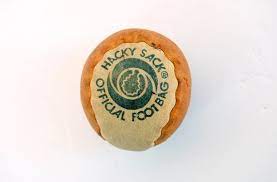
13. Hacky Sacks
This one was always fun to kick around as a kid. They were light, filled with beans and a great way to spend time with friends. While incredibly difficult to keep the game going, it was always fun to kick them back and forth a few times before they hit the ground.
Hacky sacks were also known as a “footbag” and were invented in Oregon City, OR in 1972 when two friends, John Stalberger and Mike Marshall, began kicking around a small, handmade bag as a way for John to rehabilitate his leg from knee surgery. When they both went into manufacturing, they experimented with different versions, first coming up with a square-shaped sack made of denim and filled with rice. Then they realized the internal stitched provided an improvement in control and tested a round sack instead of a square and switched to cowhide for the sake of longevity. By 1973, they developed the classic, two-panel, leather, internally sewn, disc-shape that would continue to be manufactured for the next twenty years.
This reminds me of Spikeball, which is very similar. It’s a 2 vs. 2 game with a small ball and small trampoline about the size of a hula hoop. The player from one team serves the ball by spiking it into the trampoline and each team is allowed to bounce the ball between each other up to three times before the ball needs to hit the net again. The game continues until one team either exceeds the 3-hit limit or fails to hit the net and the other team scores a point.
14. Huge Hair
Similar to the 80s rockstar hair, just about everyone had big hair during the 80s. There were all sorts of styles from perms to feathered hair to even the Jheri Curl. Everything was big in the 80s, and hair was no exception. The bigger the better. The trend was mostly started from major pop and rock artists like Cyndi Lauper, Madonna, Mötley Crüe, Michael Jackson and so many more. Everyone wanted to be like them, because they were the trendsetters back in the day.
Where did the pop icons get it from? The 70s! And before that, the 50s and 60s. If you look back to history, big hair was a big thing for a long time. It really peaked (get it, peaked?), in the 80s before it all came down in the 90s with some feathered hair cuts, crimped hair and half corn rows.
It’s not worn by many women today, however, extensions have really become a trend as long hair that looks full is what is in.
15. Penny Loafers
Remember these bad boys?? In the 80s, you could see all kinds of guys wearing these, from business execs to country club members to casual dresswear, they were incredibly comfortable for guys and were pretty stylish back then. Some women wore these too, although I don’t remember seeing too many wearing them out in public.
Penny loafers came from the 1930s and were inspired by the light, slip-on shoes worn by Norwegian farmers. They were popular among both men and women, with the original design including one strap. The term “penny loafer” came from the strap having a small slit that was the perfect size to hold a coin, and back when everyone had to use payphones, many would keep money in their shoes in case they needed to make an emergency call.
Penny loafers are actually starting to make a comeback as many young people wear them around the office. Otherwise, I see them worn by elderly men and women as they are still comfortable today and don’t have laces, so there’s no need to tie anything.
Other 80s Fads?
What other fads can you remember from the 80s? Surely there are so many more than what is on this list? Anything you recall that you were in on? Like slap bracelets or shoulder pads? I’d love to hear your thoughts in the comments below!
